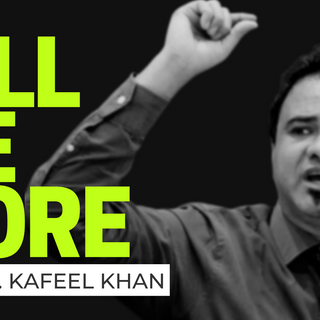
Can’t Let Go: Of the Authenticity of ‘Those Pricey Thakur Girls,’ Despite Its Patriarchal Undertones
Even though the lead character saves the world to get a man’s attention, the book remains a charming, comforting account of an evolving India in the 1980s.

In Can’t Let Go, we revisit the nostalgia around our favorite pop culture moments that haven’t aged well.
When Anuja Chauhan wrote Those Pricey Thakur Girls in 2013, she played to her strengths of depicting a Lutyens’ Delhi in the 1980s — posh in its look and feel. The wealthy family in her book maintained their loyalty to traditional socio-cultural ideas, which tend to look a lot like patriarchy and sexism when read today. The relentless quest to look for the “right” suitors; beauty standards that were defined by height, weight, complexion, where even a visible mole was a dampener; the success of daughters depending on who and how long they were married; the “other woman” being antagonized and loathed with slurs as garnish; and a cheeky romance that some have described as Mills & Boons with a desi twist.
The obsession with marriage and the “right” kind of femininity fuels the entire premise — judging A for Anjini’s potential divorce, looking down on B for Binodini for marrying a modest person, shunning C for Chandrakanta for eloping with a foreigner, insisting D for Dabbu get married soon. Beauty becomes the focal point of most conversations around marriage(not to mention Anjini, with her traditional femininity, is pitted against Dabbu, whose appearance seems subdued in comparison), and the patriarch — a retired judge — is a baby boomer echoing ideas of his time. All of it was hard to ignore eight years ago, impossible to overlook now. It also didn’t help when the Thakur girls’ legacy was thoroughly butchered in a television adaptation and carried onto a sequel novel. The former — called Dilli Wali Thakur Girls — was an unequivocal cringe-fest.
But — there’s wisdom in holding on to this book.
Hear me out. The romance may be cheesy and predictable (Debjani falling in love with D for Dylan Shekhawat), but Chauhan doesn’t let Debjani’s identity — her ambition, her eccentricities — fade away in the shadow of an enigmatic, brooding male hero. Debjani’s aspirations are clearly laid out at the start of the book; she wants to become an anchor and does what it takes. Eshwari, the youngest daughter, represents the new-age ideology; Anjana and Binodini represent struggles common in households. Importantly, within the Thakur scheme of things, most characters are given the leeway to be their own people.
The authenticity of the world-building also works to add nuance to the tale. Set in the ’80s, Delhi’s Hailey Road was vibrant but composed; love happened over landlines and letters, as Debjani and Dylan interacted through missed connections and delayed correspondences. Debjani is an anchor at Desh Darpan (DD) — an obvious proxy for Doordarshan. She is preoccupied with perfecting her speech and inflection, a resonating sentiment among the middle-class and elite of the time who were beginning to see the language as an entry into an increasingly globalized world.
Related on The Swaddle:
But the brisk narrative in Those Pricey Thakur Girls is not only about the whims of upper-middle-class families — the Thakurs, Shekhawats, and others who live in this universe illustrate a larger truth of their time. They are set against the backdrop of a post-liberalization, post-Emergency era, and this setting is where their lived realities coincide with a shifting political landscape, where state censorship and communal sensitivity grew in the aftermath of Indira Gandhi’s assassination. A colonial hangover dictates the lives of the bourgeoise — from Hailey Road’s card parties to the Shekhawats’ anniversary party — but they don’t exist in a vacuum.
Scenes ripple with commentary on freedom and identity in India, to the extent that it becomes an arc that dominates the story by the end. It is easy to separate politics from love, social obligations from national inconveniences — but the book makes an effort to conflate them, attempting an authentic portrayal of lives, that don’t exist far from the political spectrum, but are intertwined with it. The 1980s romance acknowledges that the personal is, after all, political.
As a journalist, Dylan’s character becomes a gateway to a world on the opposite spectrum of life in Hailey Road mansions. The book changes gears to explore the violence and bloodshed in the pogrom against Sikhs in east Delhi — insisting on remembering the loss and tragedy. One could argue Dylan’s brand of journalism — the irreverence, pursuit of truth and justice — is a timely reflection of several young journalists in India right now. The book also manages to make a comment on media freedom; noting the nexus between state media and politicians, the emergence of video journalism (Viewstrack), repercussions of reporting against the government, even the introduction of an anti-defamation bill. The book then becomes a nuanced documentation of the 1980s, blurring fiction with fact.
Arguably, dwelling on the bungalow with tall walls, or the social air in ballroom parties, reveals more than it says. They are an authentic reiteration of social and cultural life as it interacted with the political spectrum. Even Debjani and Dylan’s romance hinges on it — Debjani as a DD reporter represents the propaganda within public media, while Dylan is the rebellious journalist. More than being a story about an enigmatic hero who charms and is charmed by a stubborn Debjani, the book makes its protagonists choose the idea of a nation. If you can measure the success of a book by the fact that it resonates with an audience in a different decade, under a different socio-political regime, Those Pricey Thakur Girls fares well.
Even though the lead heroine saves the world to get a man’s attention, the book remains a charming, comforting account of an evolving India in the 1980s. Reading it was an exercise in evolving too.
Maybe that’s why we can’t let go just yet.
Saumya Kalia is an Associate Editor at The Swaddle. Her journalism and writing explore issues of social justice, digital sub-cultures, media ecosystem, literature, and memory as they cut across socio-cultural periods. You can reach her at @Saumya_Kalia.
Related


The Buzz Cut: The Maldives Banned Visitors From India. Where Will the Celebrities Go Now?
